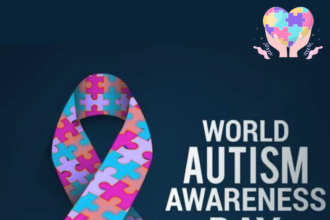Every January, healthcare professionals, advocacy groups, and individuals affected by glaucoma come together to observe Glaucoma Awareness Month. This month serves as a crucial time to educate people about this sight-threatening condition, encourage early detection, and promote proactive eye health.
Glaucoma is often called the “silent thief of sight” because it gradually damages the optic nerve, often without noticeable symptoms until vision loss has already occurred. As one of the leading causes of blindness worldwide, raising awareness about glaucoma is vital to ensuring that more people receive early diagnosis and treatment to preserve their vision.
What is Glaucoma?
Glaucoma is a group of eye diseases that cause damage to the optic nerve, which is responsible for transmitting visual information from the eye to the brain. This damage is often caused by increased intraocular pressure (IOP), but glaucoma can also occur with normal eye pressure. If left untreated, glaucoma can lead to irreversible blindness.
There are different types of glaucoma, but the two most common forms include:
- Open-Angle Glaucoma
- The most common type, affecting about 90% of glaucoma patients.
- Develops slowly over time with no early warning signs.
- Gradual vision loss starts with peripheral (side) vision before progressing to central vision.
- Angle-Closure Glaucoma
- Less common but more severe.
- Causes sudden increases in eye pressure, leading to rapid vision loss.
- Symptoms include eye pain, headaches, nausea, blurry vision, and seeing halos around lights.
Why is Glaucoma Awareness Important?
1. Many People Are Unaware They Have Glaucoma
Glaucoma is often asymptomatic in its early stages, meaning that many individuals do not realize they have the condition until they have already lost a significant portion of their vision. Over 3 million Americans have glaucoma, but nearly half are unaware of it.
2. Vision Loss from Glaucoma is Permanent
Unlike some other eye conditions, vision loss caused by glaucoma cannot be reversed. However, early detection and treatment can slow or halt the progression of the disease, preserving a person’s remaining vision.
3. Certain Groups Are at Higher Risk
Some individuals are more susceptible to developing glaucoma than others, including:
- People over 60 years old
- African Americans and Hispanics (higher risk at an earlier age)
- Individuals with a family history of glaucoma
- People with high eye pressure (elevated intraocular pressure)
- Diabetics and those with cardiovascular diseases
4. Regular Eye Exams Can Help Prevent Blindness
Because glaucoma does not always present noticeable symptoms, comprehensive eye exams are the best way to detect the disease early. The American Academy of Ophthalmology recommends that adults, especially those at risk, get a comprehensive dilated eye exam at least once every one to two years.
How Can You Protect Your Vision?
If you or someone you know is at risk for glaucoma, here are a few essential steps to take:
1. Schedule Regular Eye Exams
A comprehensive dilated eye exam is the only way to detect glaucoma early. Early diagnosis can lead to effective management strategies to slow the disease’s progression.
2. Know Your Family History
Glaucoma tends to run in families. If you have a family history of glaucoma, inform your eye doctor so they can monitor your eye health more closely.
3. Maintain a Healthy Lifestyle
- Exercise regularly: Activities like walking or swimming may help reduce intraocular pressure.
- Eat eye-healthy foods: Leafy greens, fish rich in omega-3 fatty acids, and foods high in antioxidants can support eye health.
- Avoid smoking and excessive caffeine, as these can increase eye pressure.
4. Use Prescribed Eye Drops & Treatments
For individuals diagnosed with glaucoma, medicated eye drops can help lower eye pressure and prevent further damage. In some cases, laser treatments or surgery may be recommended.
Spreading Awareness During Glaucoma Awareness Month
January is the perfect time to spread the word about glaucoma and encourage others to take their eye health seriously. Here’s how you can get involved:
✅ Share educational resources – Use social media platforms to post infographics, facts, and personal stories about glaucoma.
✅ Encourage loved ones to get an eye exam – Remind family members, especially those over 40 or at high risk, to schedule an appointment with an eye doctor.
✅ Support glaucoma research and organizations – Donate or participate in fundraising events for organizations like the Glaucoma Research Foundation and the American Academy of Ophthalmology.
✅ Wear green – Green is the official color of Glaucoma Awareness Month. Wearing green or changing your profile picture with a glaucoma awareness frame can help spark conversations.
Final Thoughts
Glaucoma is a serious but preventable cause of blindness. By raising awareness this January during Glaucoma Awareness Month, we can help more people understand the importance of early detection, regular eye exams, and proper treatment.
Don’t wait until it’s too late—protect your vision today!
💡 Have you had your eyes checked recently? Encourage your loved ones to schedule an eye exam and help spread awareness about glaucoma this month! 💡




